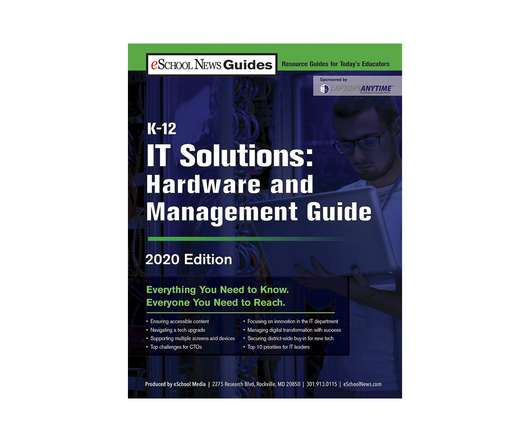3 amazing findings about digital and mobile learning
eSchool News
NOVEMBER 12, 2019
In order to support digital and mobile learning, students in K-12 classrooms need access to sufficient bandwidth, scalable and affordable broadband infrastructure, and robust Wi-Fi. Related content: 6 realities about district broadband connections. And for the most part, they have it.



























Let's personalize your content